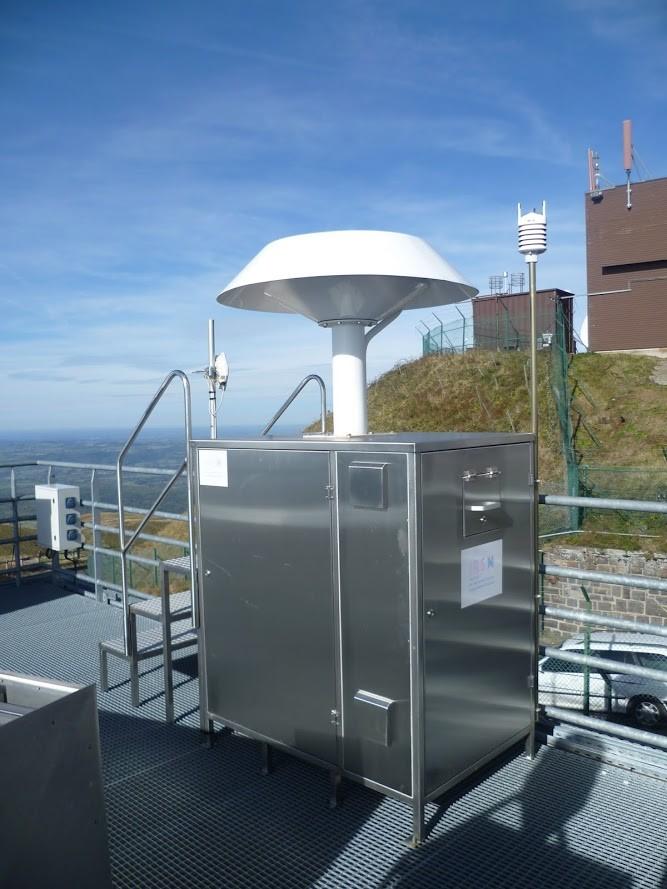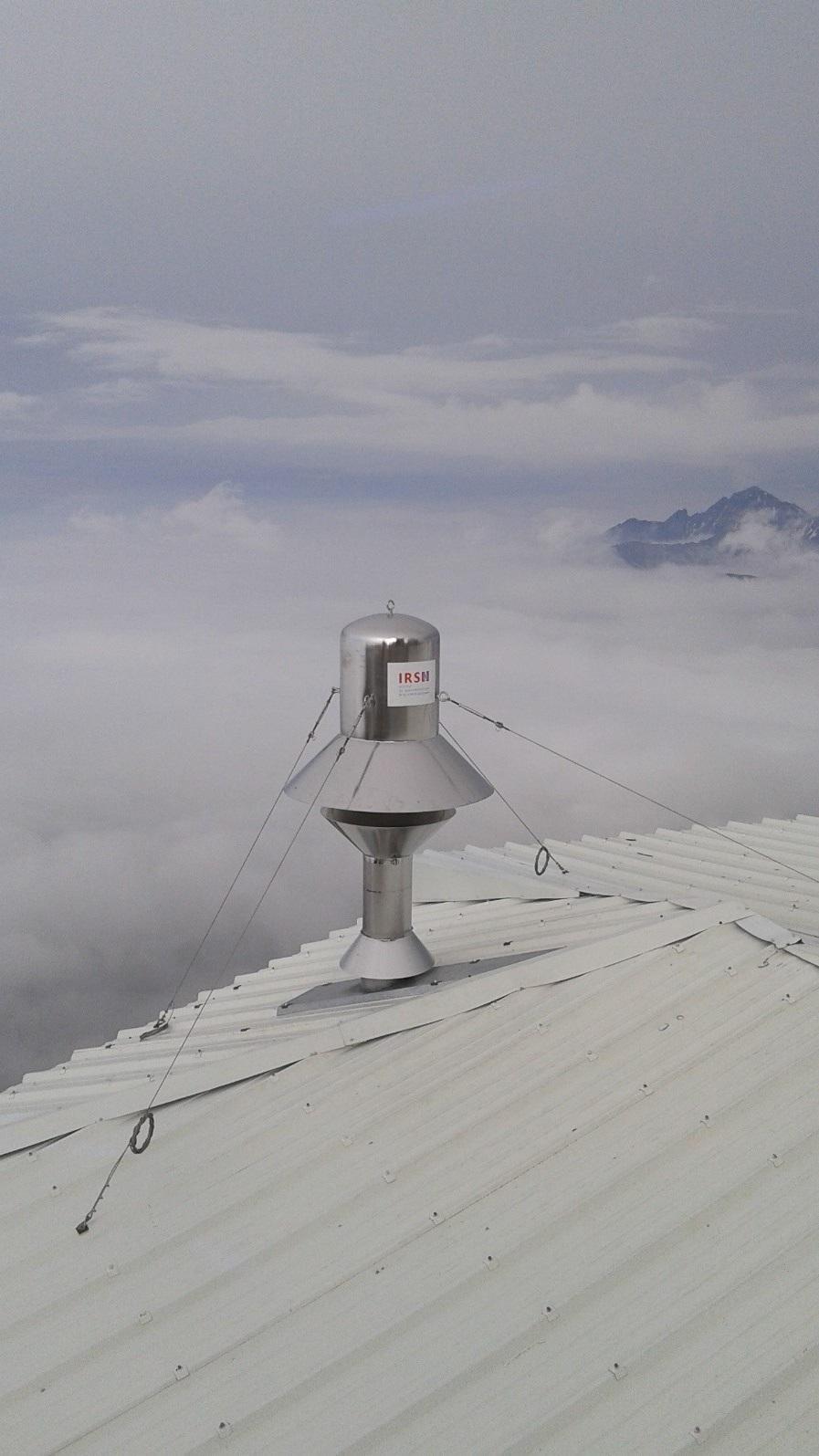OPERA network
Context
As part of its monitoring brief, IRSN carries out regular measurements of radioactivity levels in the environment, employing high-performance investigation means for the quantification of trace amounts. This mission is one of the components of the territorial surveillance carried out by IRSN throughout France with the participation of nuclear operators and various associations on a regional and/or local level. It therefore closely complements the information from the automatic warning station network Teleray, which would react instantaneously in the event of high contamination but with a lower level of sensitivity.
Key issues
Measurements from the OPERA-AIR network are also used in a wide range of research and expert appraisal work on the evolution of radionuclide stocks and flows in the environment. In addition to characterising very low levels (traces), the aim is to understand the mechanisms governing the spatio-temporal distribution and transfers of radionuclides of natural and artificial origin within the atmospheric compartment, as well as interactions between the atmosphere and other environmental compartments. Knowledge of these mechanisms then enables IRSN to design and validate the modelling of radionuclide transfer processes in order to best estimate the impact of an accidental release into the environment and the consequences for the use of the environment and human activities.

If radionuclides in unusual concentrations or rarely measured radionuclides are detected, data from the OPERA-AIR network is also used for atmospheric dispersion modelling to identify the most likely emission zones and the quantities released (source term). This was the case in 2017, when iodine-131 and ruthenium-106 were detected in trace amounts in the air in France.
Network operation
The atmospheric compartment is observed from around fifty atmospheric dust collection stations in France. These stations are managed by IRSN, which also relies on a network of local institutional and academic partners (Météo-France, universities, etc.) to change the filters and send the samples to IRSN. The radioactivity contained in these filters is analysed by IRSN laboratories located in the Paris region (Orsay and Vésinet). IRSN also has mobile OPERA-AIR high throughput stations, used for one-off studies and assessments. These stations are deployed in particular to reinforce the geographical coverage of fixed stations during radioecological site studies or expert assessments.
The stations filter the air continuously over the course of a week. Thanks to the filtration of large volumes of air (up to 150,000 m3 of air per week) and the associated "low-level" metrology, detection limits are less than or equal to 0.1 µBq/m3 of air. Analysis results are generally obtained within two weeks of receiving the filters. The actual analysis time varies between 1 and 4 days. These times can be shortened for specific radiological situations, but this is to the detriment of measurement sensitivity.
Data of a patrimonial nature
The OPERA-AIR network has been used to establish and monitor changes in the levels of the main natural radionuclides (7Be, 210Pb, 22Na, 228Ac, 40K, 234Th) and artificial radionuclides (137Cs, 131I, 60Co, 110mAg, 54Mn, 106Rh) in the atmosphere for over 60 years.
This tool was set up as early as 1959 for the atmospheric domain (aerosols, precipitation). This long period of observation has made it possible to build up the time series that are essential for scientific studies. These studies focus in particular on the variability of the levels observed and the persistence of certain long-lived radionuclides in the air in trace amounts. Thanks to its sensitivity, this system helps to detect low-level releases in France. It can also be used to detect significant releases when these occur far from the national territory (re-emission of radionuclides by fires in the forests around the Chernobyl power station, for example), or as was the case following nuclear accidents (Chernobyl, Fukushima) and previously, during the period of atmospheric nuclear testing.
These stations were used in particular in the days following the Fukushima accident to detect the very first signs of the arrival of lightly contaminated air masses over France. On a routine basis, they are used to characterise the ambient background of certain artificial radionuclides such as 137Cs, as well as any variations in radioactivity levels linked to meteorological conditions or dust levels. OPERA-AIR stations also record meteorological data, in particular wind speed and direction, temperature, humidity and rainfall.
Upgrading of the network
In order to strengthen national coverage, new sites have recently been equipped: Pic du Midi de Bigorre in the Pyrenees, Romans-sur-Isère in the Drome region, Biarritz, and soon Narbonne.

The OPERA-AIR network has also been upgraded over the last decade to increase its detection sensitivity to small-scale events, by choosing pumps with higher flow rates. These changes have affected very high flow stations (from 300 to 700 or even 900 m3/h) and medium flow stations (from 5 to 80 m3/h). The next changes planned concern the ability to communicate with the stations. This functionality will make it possible to interrogate them and modify their flow rate if necessary, or to activate the iodine sampling line for stations that are currently equipped with one (medium-flow stations close to nuclear facilities). In the months and years to come, detection capacity will be further improved with the installation of "high flow" sampling lines for the gaseous fraction, which will give a better indication of the presence of iodine in this form, even at low concentration.
